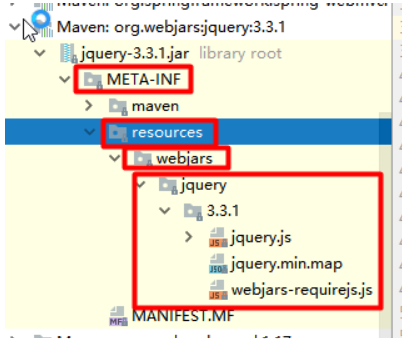Springboot学习:Web开发介绍
FLowUs邀请链接:https://flowus.cn/login?code=AXNU63
FlowUs邀请码:AXNU63
简介
使用SpringBoot;
1)、创建SpringBoot应用,选中我们需要的模块;
2)、SpringBoot已经默认将这些场景配置好了,只需要在配置文件中指定少量配置就可以运行起来
3)、自己编写业务代码;
自动配置原理?
这个场景SpringBoot帮我们配置了什么?能不能修改?能修改哪些配置?能不能扩展?xxx
xxxxAutoConfiguration:帮我们给容器中自动配置组件;
xxxxProperties:配置类来封装配置文件的内容;
SpringBoot对静态资源的映射规则
@ConfigurationProperties(prefix = "spring.resources", ignoreUnknownFields = false)
public class ResourceProperties implements ResourceLoaderAware {
//可以设置和静态资源有关的参数,缓存时间等
WebMvcAuotConfiguration:
@Override
public void addResourceHandlers(ResourceHandlerRegistry registry) {
if (!this.resourceProperties.isAddMappings()) {
logger.debug("Default resource handling disabled");
return;
}
Integer cachePeriod = this.resourceProperties.getCachePeriod();
if (!registry.hasMappingForPattern("/webjars/**")) {
customizeResourceHandlerRegistration(
registry.addResourceHandler("/webjars/**")
.addResourceLocations(
"classpath:/META-INF/resources/webjars/")
.setCachePeriod(cachePeriod));
}
String staticPathPattern = this.mvcProperties.getStaticPathPattern();
//静态资源文件夹映射
if (!registry.hasMappingForPattern(staticPathPattern)) {
customizeResourceHandlerRegistration(
registry.addResourceHandler(staticPathPattern)
.addResourceLocations(
this.resourceProperties.getStaticLocations())
.setCachePeriod(cachePeriod));
}
}
//配置欢迎页映射
@Bean
public WelcomePageHandlerMapping welcomePageHandlerMapping(
ResourceProperties resourceProperties) {
return new WelcomePageHandlerMapping(resourceProperties.getWelcomePage(),
this.mvcProperties.getStaticPathPattern());
}
//配置喜欢的图标
@Configuration
@ConditionalOnProperty(value = "spring.mvc.favicon.enabled", matchIfMissing = true)
public static class FaviconConfiguration {
private final ResourceProperties resourceProperties;
public FaviconConfiguration(ResourceProperties resourceProperties) {
this.resourceProperties = resourceProperties;
}
@Bean
public SimpleUrlHandlerMapping faviconHandlerMapping() {
SimpleUrlHandlerMapping mapping = new SimpleUrlHandlerMapping();
mapping.setOrder(Ordered.HIGHEST_PRECEDENCE + 1);
//所有 **/favicon.ico
mapping.setUrlMap(Collections.singletonMap("**/favicon.ico",
faviconRequestHandler()));
return mapping;
}
@Bean
public ResourceHttpRequestHandler faviconRequestHandler() {
ResourceHttpRequestHandler requestHandler = new ResourceHttpRequestHandler();
requestHandler
.setLocations(this.resourceProperties.getFaviconLocations());
return requestHandler;
}
}
1)、所有 /webjars/** ,都去 classpath:/META-INF/resources/webjars/ 找资源;
webjars:以jar包的方式引入静态资源; http://www.webjars.org/

localhost:8080/webjars/jquery/3.3.1/jquery.js:
<!--引入jquery-webjar-->在访问的时候只需要写webjars下面资源的名称即可
<dependency>
<groupId>org.webjars</groupId>
<artifactId>jquery</artifactId>
<version>3.3.1</version>
</dependency>
2)、"/**" 访问当前项目的任何资源,都去(静态资源的文件夹)找映射
"classpath:/META-INF/resources/",
"classpath:/resources/",
"classpath:/static/",
"classpath:/public/"
"/":当前项目的根路径
localhost:8080/abc === 去静态资源文件夹里面找abc
3)、欢迎页; 静态资源文件夹下的所有index.html页面;被"/**"映射;
localhost:8080/ 找index页面
4)、所有的 **/favicon.ico 都是在静态资源文件下找;
自己定义静态文件夹的路径:
自己定义了之后,默认的静态资源文件夹就不能使用了
JSON接口开发
在以前的项目中,使用JSON接口需要:
- 添加 jackjson 等相关 jar 包
- 配置 Spring Controller 扫描
- 对接的方法添加 @ResponseBody
Spring Boot只需要类添加 @RestController 即可,默认类中的方法都会以 json 的格式返回
@RestController
public class HelloController {
@RequestMapping("/getUser")
public User getUser() {
User user=new User();
user.setUserName("小明");
user.setPassWord("xxxx");
return user;
}
}
如果需要使用页面开发只要使用@Controller注解即可
自定义Filter
我们常常在项目中会使用 filters 用于录调用日志、排除有 XSS 威胁的字符、执行权限验证等等。Spring Boot 自动添加了 OrderedCharacterEncodingFilter 和 HiddenHttpMethodFilter,并且我们可以自定义 Filter。
两个步骤:
- 实现 Filter 接口,实现 Filter 方法
- 添加@Configuration 注解,将自定义Filter加入过滤链
@Configuration
public class WebConfiguration {
@Bean
public RemoteIpFilter remoteIpFilter() {
return new RemoteIpFilter();
}
@Bean
public FilterRegistrationBean testFilterRegistration() {
FilterRegistrationBean registration = new FilterRegistrationBean();
registration.setFilter(new MyFilter());
registration.addUrlPatterns("/*");
registration.addInitParameter("paramName", "paramValue");
registration.setName("MyFilter");
registration.setOrder(1);
return registration;
}
public class MyFilter implements Filter {
@Override
public void destroy() {
// TODO Auto-generated method stub
}
@Override
public void doFilter(ServletRequest srequest, ServletResponse sresponse, FilterChain filterChain)
throws IOException, ServletException {
// TODO Auto-generated method stub
HttpServletRequest request = (HttpServletRequest) srequest;
System.out.println("this is MyFilter,url :"+request.getRequestURI());
filterChain.doFilter(srequest, sresponse);
}
@Override
public void init(FilterConfig arg0) throws ServletException {
// TODO Auto-generated method stub
}
}
}
自定义 Property
- 配置在 application.properties 中
- 自定义配置类
@Component
public class NeoProperties {
@Value("${com.neo.title}")
private String title;
@Value("${com.neo.description}")
private String description;
//省略getter settet方法
}
log配置
logging.path=/user/local/log
logging.level.com.favorites=DEBUG
logging.level.org.springframework.web=INFO
logging.level.org.hibernate=ERROR
path 为本机的 log 地址,logging.level 后面可以根据包路径配置不同资源的 log 级别
数据库操作
添加 jar 包:
<dependency>
<groupId>org.springframework.boot</groupId>
<artifactId>spring-boot-starter-data-jpa</artifactId>
</dependency>
<dependency>
<groupId>mysql</groupId>
<artifactId>mysql-connector-java</artifactId>
</dependency>
添加配置文件:
spring.datasource.url=jdbc:mysql://localhost:3306/test
spring.datasource.username=root
spring.datasource.password=root
spring.datasource.driver-class-name=com.mysql.jdbc.Driver
spring.jpa.properties.hibernate.hbm2ddl.auto=update
spring.jpa.properties.hibernate.dialect=org.hibernate.dialect.MySQL5InnoDBDialect
spring.jpa.show-sql= true
添加实体类和 Dao:
@Entity
public class User implements Serializable {
private static final long serialVersionUID = 1L;
@Id
@GeneratedValue
private Long id;
@Column(nullable = false, unique = true)
private String userName;
@Column(nullable = false)
private String passWord;
@Column(nullable = false, unique = true)
private String email;
@Column(nullable = true, unique = true)
private String nickName;
@Column(nullable = false)
private String regTime;
//省略getter settet方法、构造方法
}
dao 只要继承 JpaRepository 类就可以,几乎可以不用写方法,
可以根据方法名来自动的生成 SQL,比如findByUserName 会自动生成一个以 userName 为参数的查询方法,比如 findAlll 自动会查询表里面的所有数据,比如自动分页等等。
Entity 中不映射成列的字段得加 @Transient 注解,不加注解也会映射成列
public interface UserRepository extends JpaRepository<User, Long> {
User findByUserName(String userName);
User findByUserNameOrEmail(String username, String email);
}
测试:
@RunWith(SpringJUnit4ClassRunner.class)
@SpringApplicationConfiguration(Application.class)
public class UserRepositoryTests {
@Autowired
private UserRepository userRepository;
@Test
public void test() throws Exception {
Date date = new Date();
DateFormat dateFormat = DateFormat.getDateTimeInstance(DateFormat.LONG, DateFormat.LONG);
String formattedDate = dateFormat.format(date);
userRepository.save(new User("aa1", "aa@126.com", "aa", "aa123456",formattedDate));
userRepository.save(new User("bb2", "bb@126.com", "bb", "bb123456",formattedDate));
userRepository.save(new User("cc3", "cc@126.com", "cc", "cc123456",formattedDate));
Assert.assertEquals(9, userRepository.findAll().size());
Assert.assertEquals("bb", userRepository.findByUserNameOrEmail("bb", "cc@126.com").getNickName());
userRepository.delete(userRepository.findByUserName("aa1"));
}
}
Spring Data Jpa 还有很多功能,比如封装好的分页,可以自己定义 SQL,主从分离等等
Thymeleaf 模板
Thymeleaf 是一款用于渲染 XML/XHTML/HTML5 内容的模板引擎。类似 JSP,Velocity,FreeMaker 等,它也可以轻易的与 Spring MVC 等 Web 框架进行集成作为 Web 应用的模板引擎。与其它模板引擎相比,Thymeleaf 最大的特点是能够直接在浏览器中打开并正确显示模板页面,而不需要启动整个 Web 应用。
Thymeleaf 是与众不同的,因为它使用了自然的模板技术。这意味着 Thymeleaf 的模板语法并不会破坏文档的结构,模板依旧是有效的XML文档。模板还可以用作工作原型,Thymeleaf 会在运行期替换掉静态值。Velocity 与 FreeMarke r则是连续的文本处理器。 下面的代码示例分别使用 Velocity、FreeMarker 与 Thymeleaf 打印出一条消息:
Velocity: <p>$message</p>
FreeMarker: <p>${message}</p>
Thymeleaf: <p th:text="${message}">Hello World!</p>
注意,由于 Thymeleaf 使用了 XML DOM 解析器,因此它并不适合于处理大规模的 XML 文件。
引入webjars:
页面即原型
在 Web 开发过程中一个绕不开的话题就是前端工程师与后端工程师的协作,在传统 Java Web 开发过程中,前端工程师和后端工程师一样,也需要安装一套完整的开发环境,然后各类 Java IDE 中修改模板、静态资源文件,启动/重启/重新加载应用服务器,刷新页面查看最终效果。
但实际上前端工程师的职责更多应该关注于页面本身而非后端,使用 JSP,Velocity 等传统的 Java 模板引擎很难做到这一点,因为它们必须在应用服务器中渲染完成后才能在浏览器中看到结果,而 Thymeleaf 从根本上颠覆了这一过程,通过属性进行模板渲染不会引入任何新的浏览器不能识别的标签,例如 JSP 中的 ,不会在 Tag 内部写表达式。整个页面直接作为 HTML 文件用浏览器打开,几乎就可以看到最终的效果,这大大解放了前端工程师的生产力,它们的最终交付物就是纯的 HTML/CSS/JavaScript 文件。
引入Thymeleaf
<dependency>
<groupId>org.springframework.boot</groupId>
<artifactId>spring-boot-starter-thymeleaf</artifactId>
</dependency>
切换thymeleaf版本
<properties>
<thymeleaf.version>3.0.9.RELEASE</thymeleaf.version>
<!-- 布局功能的支持程序 thymeleaf3主程序 layout2以上版本 -->
<!-- thymeleaf2 layout1-->
<thymeleaf-layout-dialect.version>2.2.2</thymeleaf-layout-dialect.version>
</properties>
Thymeleaf使用
@ConfigurationProperties(prefix = "spring.thymeleaf")
public class ThymeleafProperties {
private static final Charset DEFAULT_ENCODING = Charset.forName("UTF-8");
private static final MimeType DEFAULT_CONTENT_TYPE = MimeType.valueOf("text/html");
public static final String DEFAULT_PREFIX = "classpath:/templates/";
public static final String DEFAULT_SUFFIX = ".html";
//
只要我们把HTML页面放在classpath:/templates/,thymeleaf就能自动渲染;
- 导入thymeleaf的名称空间
<html lang="en" xmlns:th="http://www.thymeleaf.org">
- 使用thymeleaf语法;
<!DOCTYPE html>
<html lang="en" xmlns:th="http://www.thymeleaf.org">
<head>
<meta charset="UTF-8">
<title>Title</title>
</head>
<body>
<h1>成功!</h1>
<!--th:text 将div里面的文本内容设置为 -->
<div th:text="${hello}">这是显示欢迎信息</div>
</body>
</html>



